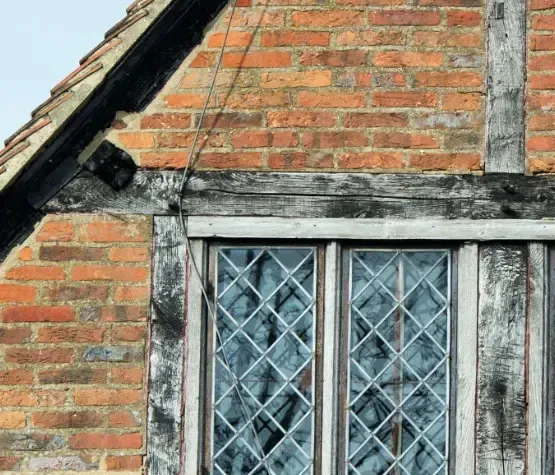When you own any home, insurance is an invaluable safety net if anything goes wrong, but when you own a listed building of historic interest, it is even more important. With the satisfaction and enjoyment of owning a listed building also come responsibilities and potential pitfalls.
No homeowner wants to find themselves in a position where they need to make a claim, but the right type of listed buildings cover can ease the stress.
For owners of listed properties, having to repair any damage or restore your home to its previous condition can be expensive, complicated, and nearly always a stressful process. That’s why it’s so important to take preventative measures to reduce the risk of any serious issues arising with your building.
Damage can come in many forms, from accidental damage to acts of God and damage caused by a criminal offence.
At Abode, we are well versed in the dangers to your listed building and, therefore, the processes and steps you can take to keep your home of historic interest safe.
Before reading the list below, it is important to consider that updates to listed properties can require prior consent or planning permission and unauthorised works to your property can be rejected by your local planning authority – although many of our tips are simply small tweaks and things you may not previously have thought of.
Any property can be a target for thieves, but the historic features of listed homes often make them more vulnerable to a break-in. Your best course of action is to deter any burglars from making the attempt. Whilst there are different types of listed buildings, the prevention tips below apply to many, if not all.
To avoid people committing a criminal offence against your listed building, we recommend:
Locks and Keys
Deterring intruders
When staying away
For more tips to keep your listed building safe, specifically through the summer, please find out more here
The impact of adverse weather such as storms or freezing temperatures can be considerable. Repairing the damage can be tricky too, especially if your home is flooded and you need to wait for it to dry out beforehand, or repairs require materials which are in demand and bring with them a long turnaround time between ordering and delivery.
It’s a great idea to check all areas of your property are in a state of good repair prior to any extreme weather forecast. You could do this regularly – we’d suggest the middle of each season. A simple walk around looking for any changes could help protect you in the long run.
With severe storms and extreme temperatures on the rise, the following steps can help your listed building withstand as much damage as possible:
Your roof
Adverse weather
Extended periods away from your listed building
It’s part of the risk that comes with the privilege of living in a listed property: your home is likely to be a greater fire risk due to the materials it’s made from, especially if you have a thatched roof.
To try to prevent the devastating effects of a fire, make sure you take precautions and always act sensibly.
At Abode, we recommend:
Alarms
Yearly checks
Safety and care
From gaining listed building consent to taking steps to prevent damage from criminal offences, owner mishaps and weather-induced damage, there will always be an expert available to help.
No matter if your home is Grade I, Grade II or Grade II*, listed buildings have processes – and new developments, renovations and repairs can require notice or approval prior to work being done. Sometimes, work to ensure your home is protected will fall within this bracket.
Your home is, after all, your responsibility and addressing the key areas we have mentioned above will give you the peace of mind that your listed building is as safe as you can make it. But if you’re ever unsure about the steps you’re taking and how effective they are, always ask for specialist advice.
When it comes to home improvements or special architectural changes, local authorities will be able to help you. Historic England is also a great resource for listed building owners.
For advice and guidance on your listed building insurance, our team is ready to help whenever you need guidance or support, and we can recommend the right specialists if you need professional advice on specific parts of your home, such as the electrics, plumbing, chimneys, or thatched roof.
Insuring with a specialist broker means they will be able to not only help you in the case of a claim, but can assist you in making the chance of this happening as small as possible.
To speak to a specialist today about listed building insurance, please contact us, or call us on 01622476433
